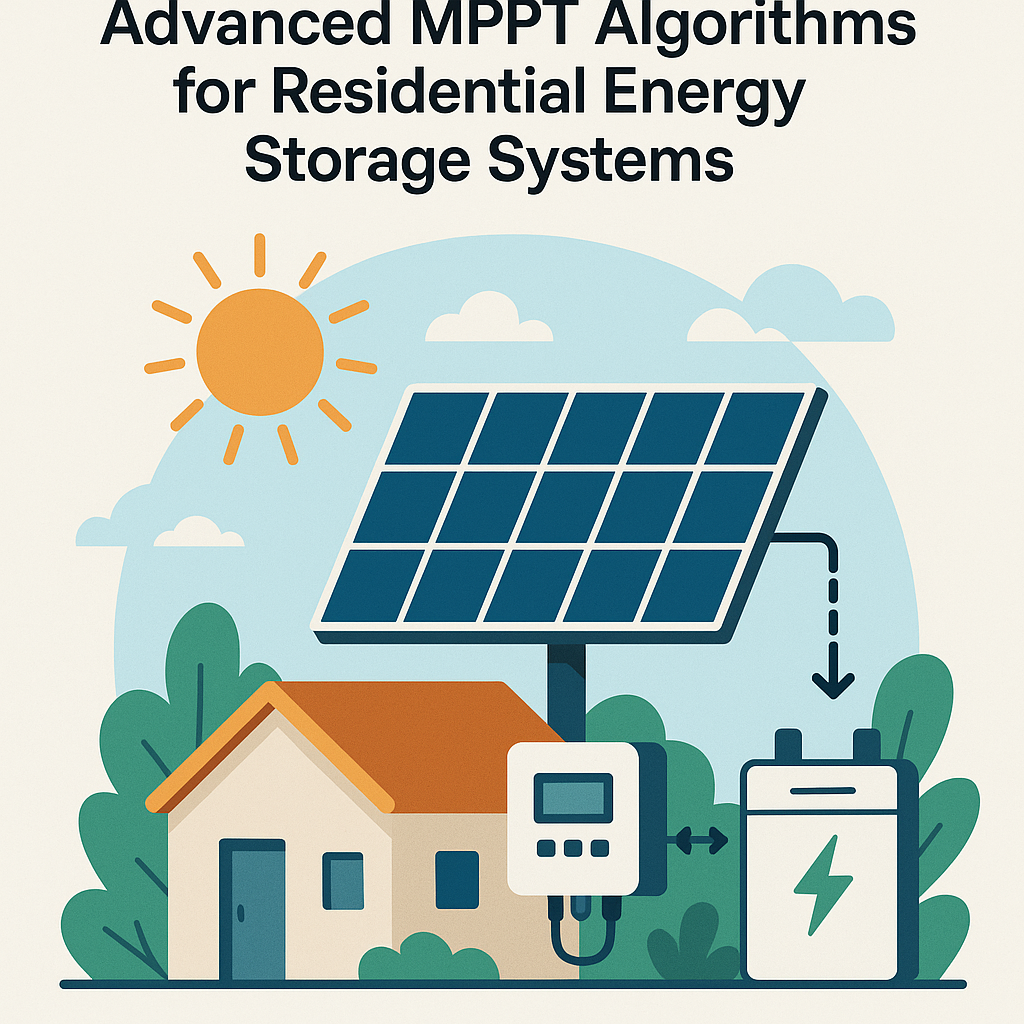Introduction
As the global demand for renewable energy sources increases, solar energy continues to emerge as a leading solution for sustainable electricity generation. Within this domain, solar inverters play a vital role in converting the direct current (DC) generated by solar panels into alternating current (AC) for household use. A crucial aspect of solar inverters is their ability to maximize energy extraction from solar panels, which is where advanced Maximum Power Point Tracking (MPPT) algorithms come into play. This article explores how these algorithms enhance the efficiency of solar inverters in residential energy storage systems.
Understanding MPPT Algorithms
MPPT algorithms are designed to optimize the amount of power extracted from solar panels, particularly under varying environmental conditions. They continuously adjust the electrical operating point of the modules to ensure they operate at their maximum power point. There are several types of MPPT algorithms, each with its strengths and weaknesses:
- Perturb and Observe (P&O): This is the most commonly used method, where the algorithm makes small adjustments to the voltage and observes the change in power output.
- Incremental Conductance (IncCond): This method compares the incremental conductance with the instantaneous conductance to find the maximum power point.
- Constant Voltage (CV): This simpler method maintains a fixed voltage level to optimize power extraction.
- Fuzzy Logic Control: This approach uses fuzzy logic to handle the uncertainties in the solar power generation process.
Benefits of Advanced MPPT Algorithms
Advanced MPPT algorithms significantly improve the performance of solar inverters in residential energy storage systems. Here are some key benefits:
- Increased Energy Harvesting: By continuously tracking the maximum power point, advanced algorithms can extract more energy from solar panels, particularly during fluctuating weather conditions.
- Improved Efficiency: Enhanced algorithms can reduce energy losses, leading to higher overall system efficiency.
- Better Performance in Partial Shade: Advanced MPPT techniques can effectively handle the challenges posed by shading from trees, buildings, or other obstacles, ensuring optimal energy capture.
- Faster Response Times: Modern algorithms can quickly respond to changes in sunlight intensity, ensuring that energy extraction remains at peak performance throughout the day.
Challenges in Implementing MPPT Algorithms
While the advantages of advanced MPPT algorithms are clear, several challenges must be addressed to optimize their implementation:
- Complexity: More sophisticated algorithms can be complex to design and implement, requiring advanced programming skills and understanding of solar technologies.
- Cost: The integration of advanced MPPT algorithms into solar inverters can increase manufacturing costs, potentially impacting the overall price of residential solar systems.
- Compatibility: Ensuring that new algorithms work seamlessly with existing inverter technologies can be a significant hurdle.
Recent Innovations in MPPT Technology
Recent advancements in technology have led to the development of innovative MPPT algorithms that further enhance the efficiency of solar inverters:
- Machine Learning: Some new MPPT algorithms utilize machine learning techniques to predict and adapt to changing environmental conditions, optimizing energy capture over time.
- Hybrid Algorithms: Combining different MPPT techniques can yield better performance, as hybrid algorithms leverage the strengths of multiple methods to improve energy harvesting.
- Real-time Data Analytics: The integration of real-time data analytics allows for more precise tracking of solar performance, enabling inverter systems to adjust dynamically.
Impact on Residential Energy Storage Systems
The integration of advanced MPPT algorithms in solar inverters has a profound impact on residential energy storage systems:
- Optimized Battery Charging: Enhanced algorithms ensure that batteries are charged more efficiently, extending their lifespan and maximizing their utility.
- Cost Savings: Increased energy efficiency can lead to reduced electricity bills, providing significant cost savings for homeowners.
- Enhanced Energy Independence: Improved performance allows homeowners to rely more on solar energy, decreasing dependence on grid electricity and enhancing energy resilience.
Conclusion
As the solar industry continues to evolve, the role of advanced MPPT algorithms in enhancing the efficiency of solar inverters cannot be overstated. By maximizing energy extraction from solar panels, these algorithms not only improve the performance of residential energy storage systems but also contribute to the broader goal of sustainable energy consumption. As technology progresses, we can expect to see further innovations in MPPT techniques that will push the boundaries of solar energy efficiency, making renewable energy an even more viable option for households around the world.



